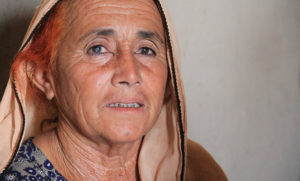
Diagnosing a psychiatric disorder or other type of illness can be influenced by many different factors. In clinical interactions between patients and clinicians, differences in age, gender, socioeconomic status, as well as ethnicity can cause barriers in communication, and this can also happen during the diagnostic process (Ayonrinde, 2003).
One example is people from South Asian minority ethnic groups who face barriers to receiving a dementia diagnosis. There is an increasing amount of evidence that shows how people from these groups can face barriers to care because of different perceptions and awareness levels of dementia, as well as stigma and culturally preferred coping strategies (Giebel et al, 2015; Mukadam et al, 2015).
Of course, it’s not just people from South Asia. There are many other ethnic groups where different illness perceptions and stigma can create a barrier to receiving a diagnosis (George et al, 2014). Because of these cultural differences, it is important that clinical interactions and the diagnostic process itself takes account of any differences and offers a fair and effective service to all.
For this reason, the Outline for Cultural Formulation (OCF) was set up as a framework to help clinicians identify how cultural differences can impact on illness and care. Whilst this framework is frequently used in clinical training and in raising cultural competence, its application in clinical practice and care seems to be more challenging. That’s why a subgroup of the Diagnostic and Statistical Manual of Mental Disorders 5 (DSM-5) has come up with the Cultural Formulation Interview (CFI).
There are two basic (an initial assessment interview and an informant interview), and 12 supplementary modules to the CFI. The reported study here by Lewis-Fernandez and colleagues (2017) evaluated the initial core assessment interview in an international field trial.

People from minority ethnic groups may face barriers to effective diagnosis and care.
Methods
The 14-item pilot version of the CFI was tested across six countries (USA, Canada, India, Kenya, The Netherlands, Peru). In total, participants were recruited from 11 psychiatric out-patient clinics, with at least 30 participants recruited from each site. This was done via opportunity sampling.
All clinicians collecting data as part of this study had received a 2-hour training session in administering the CFI. The Cultural Formulation Interview focuses on four cultural domains:
- Definition of the problem
- Perceptions of cause, context and support
- Factors affecting self-coping and past help-seeking
- Factors affecting current help-seeking.
Participants were 16 years or older and had to be fluent in the language of the local clinicians. Patients were not eligible if they were suicidal or homicidal, substance abusing or withdrawing from substances, or lacked understanding of the study.
In addition to the CFI, patients completed the Debriefing Instrument for Patients (DIP) and clinicians completed the Debriefing Instrument for Clinicians (DIC). Researchers also administered semi-structured interviews with patients after the CFI was completed, to evaluate the helpfulness of individual CFI items and its role in clinical practice.
The quantitative data were analysed using a mix of different analyses, including Cronbach’s alpha to assess the internal consistency of the DIP and DIC; and linear mixed-effect modelling to assess for patient-clinician differences. The qualitative data were analysed by three researchers using deductive content analysis, focusing on codes for feasibility, acceptability, and utility. When 10% of the transcripts were compared for codes, an 80% inter-rater reliability was found.
Results
A total of 318 patients participated in this study across six countries. The DIP showed high internal consistency for all three domains of feasibility, acceptability, and utility, whilst the DIC showed low internal consistency for feasibility and utility. Two items under feasibility and acceptability were found problematic due to their negative wording, so that both items were removed, resulting in higher Cronbach’s alpha ratings for those two domains.
Whilst patient and clinician ratings of feasibility, acceptability, and utility were all positive, clinician ratings of feasibility were significantly lower than patient ratings. Patient ratings across the three domains were all similar.
The qualitative interviews supported the quantitative findings in that clinicians were concerned with the feasibility of the CFI, also due to the duration of the tool administration. Both patients and clinicians thought the CFI was an acceptable tool that could elicit empathy and was person-centred, whilst some questions could cause upset in patients. The utility of the tool was the most positive aspect of the CFI, as patients and clinicians suggested the CFI was helpful in the diagnostic process and in treatment planning.

The CFI was found to be feasible, acceptable and useful, but clinician feasibility ratings were significantly lower than patient ratings.
Limitations
Whilst this study benefits from international recruitment and thus increased representativeness, there are some regions that have been neglected in this assessment, namely the Asian continent. People from China might have different perceptions of the CFI compared to those from Kenya or the Netherlands, and there could have been a greater focus on third world countries in this assessment.
Another limitation is the low psychometric properties of the clinician ratings of the tool, suggesting further changes or tests should be conducted before the tool is employed in clinical practice across the world.
Furthermore, the amount of time it takes to administer the tool might be a limitation that could require making some changes, to ensure it is an easy-to-use and quick additional measure in clinical settings, where time is often sparse.
Take-home messages
- It is important to assess the role of culture in mental health, and the CFI can provide such a standardised assessment
- Both patients and clinicians considered the CFI a useful tool
- The feasibility of the CFI needs to be addressed, as it can take a very long time to complete it in clinical practice.

Clinicians expressed some concern that it might take too long to use the Cultural Formulation Interview in practice.
Links
Primary paper
Lewis-Fernandez R. et al (2017) Feasibility, acceptability and clinical utility of the Cultural Formulation Interview: mixed-methods results from the DSM-5 international field trial. The British Journal of Psychiatry 1–8. doi: 10.1192/bjp.bp.116.193862 [Abstract]
Other references
Ayonrinde O. (2003). Importance of cultural sensitivity in therapeutic transactions: considerations for healthcare providers. Dis Manage Health Outcomes, 11, 233–48. [Abstract]
Giebel CM, Zubair M, Jolley D, Bhui KS, Purandare N, Worden A, Challis D. (2015). South Asian older adults with memory impairment: improving assessment and access to dementia care. IJGP, 30, 345-356. [Abstract]
Mukadam N, Waugh A, Cooper C, Livingston G. (2015). What would encourage help-seeking for memory problems among UK-based South Asians? A qualitative study. BMJ Open, 5, e007990.
George S, Dura N, Norris K. (2014). A Systematic Review of Barriers and Facilitators to Minority Research Participation Among African Americans, Latinos, Asian Americans, and Pacific Islanders. American Journal of Public Health, 104(2), e16-e31.
Photo credits

I have read some of your research intro with much interest. I did some work which can be viewed in my book Mugonyi J (2015) Race Relations and Multiculturalism. Olympia Publishers